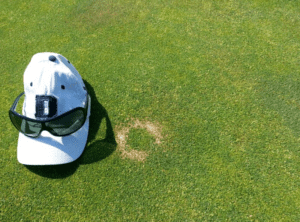🌟 Improve your sports field with a expert audit.

Share on RRSS

Summer patch is a disease caused through root infection by the fungus Magnaporthe poae. Of major concern on Poa Annua, Poa Pratensis and Festucas Finas.
The conditions of occurrence are:
-Night temperatures above 21 degrees Celsius
-High irrigation rates
These are parameters frequently reached in summer. It tends to be more prevalent in mature areas than in more recently sown areas.
Symptoms are patches varying in size from a few to several centimetres in diameter. Initially the affected plants wilt, turning greyish-green with white foliar bands. These plants eventually die and leave patches in the form of brown rings and arches. Roots and crowns rot and become necrotic.

Agronomic management involves improving the root system, through aeration, adequate irrigation management (avoiding excessive humidity or water stress) and appropriate management of the thatchas well as increasing cutting height during periods of stress. Reseeding with more resistant cultivars such as Agrostis can also help management.
The chemical control passes through DMI fungicides such as propiconazole, triadimefon, myclobutanil and fenarimol, as well as strobirulins such as azoxystrobin. Methylthiophanate is also recommended. Broth doses must be high enough to incorporate the active matter into the soil profile.
The time of implementation should be when the soil temperature remains above 20 degrees Celsius, in the first few centimetres of the soil profile, for more than 3 days in a row.

We appreciate your interest in us, so we leave you this form so that you can subscribe and have priority access to our exclusive promotions and offersideal for saving money on your purchases and keeping your sports and agricultural fields at the forefront!
In addition, we will keep you informed about the LATEST NEWS in Greens and Agriculture with the latest entries from our Greenkeepedia and Agrikipediaincluding innovations, events and interviews with experts.
Click to subscribe now and get exclusive access!
One Response
Hey very interesting blog!